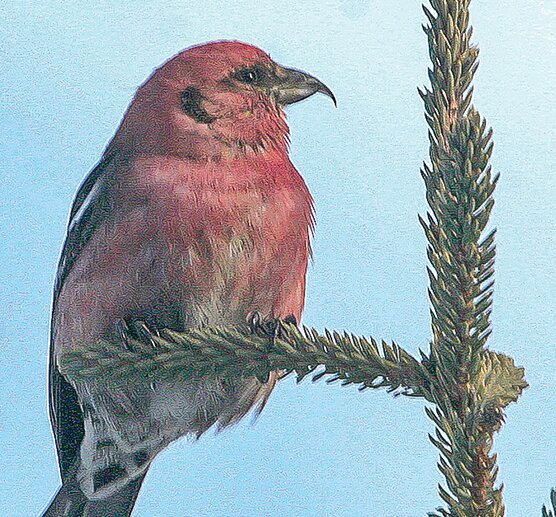Support the Timberjay by making a donation.
Area bird counts reflect the impact of mild weather
Many more hawks and crows remained in the North this year; northern finch numbers mostly lower
REGIONAL— Plenty of hawks and crows and very few woodpeckers or grosbeaks. Those were among the more consistent findings from the more than 100 area residents who took part in Christmas Bird …
This item is available in full to subscribers.
Attention subscribers
To continue reading, you will need to either log in to your subscriber account, below, or purchase a new subscription.
Please log in to continue |
Area bird counts reflect the impact of mild weather
Many more hawks and crows remained in the North this year; northern finch numbers mostly lower
REGIONAL— Plenty of hawks and crows and very few woodpeckers or grosbeaks. Those were among the more consistent findings from the more than 100 area residents who took part in Christmas Bird counts around the area in northern St. Louis and Lake counties over the holidays.
It’s been an unusual winter for birds in the North Country, as many species that normally head south have lingered thanks to limited snow cover and mild temperatures up until this past week.
The Isabella bird count, one of the longest-running counts in the region at 42 years, posted 15 rough-legged hawks, slaughtering the previous record of just one. The count also doubled its previous record of three bald eagles, with six. That was a paltry total, however, compared to the 103 bald eagles reported on the Virginia bird count, which beat the previous record of 37 bald eagles in that now 20-year-old count. The mild conditions and exceptionally late ice-ups of area lakes and rivers likely kept the fish-eating bald eagles from migrating south this year. Both the Cook and Aurora counts reported a northern harrier, the first time for that species on those counts. Harriers, also known as marsh hawks, typically winter south of Minnesota, so their appearance in the far northern part of the state is highly unusual.
The mild conditions also appear to have favored crows, a species once rarely found in the region in winter. On the 44-year-old Aurora count, birders sighted 75 crows, the second highest count on record, while counters found just 32 ravens, the second lowest count ever. Even the Isabella count, which tallies a crow only once every three years on average, set a new record with 12.
Other corvids, (members of the crow family) proved to be highly variable. Gray jays continued to show a general decline, with the Virginia count reporting its third year with no gray jays at all. The Aurora count tallied just eight of these friendly and curious birds, while the Isabella count reported 43, which is the count’s long-term average. The Isabella count still holds the North American record for the most gray jays with 154, recorded back in 1986.
As gray jays have declined, black-billed magpies have become increasingly notable in much of the area. The Aurora count tied its previous record for the species, with eight, matching the gray jay numbers on the count. The Virginia count reported 12 magpies, the second highest tally in the count’s history. Several magpies were reported on the Cook count as well although a final number wasn’t available as of presstime. No results from the Ely count were available as of presstime.
Among the finches, both evening and pine grosbeaks have proven to be scarce all winter. Counters in Aurora tallied just four pine grosbeaks, the second lowest count on record, along with 20 evening grosbeaks, or well below the long-term average count of 53.
Meanwhile, most counts reported good numbers of red crossbills, which have also been showing up at area feeders this winter, something these cone specialists rarely do. The Isabella count tallied a record 133 red crossbills, while the Aurora count tallied 20 white-winged crossbills. Other smaller finches, like redpolls, pine siskins, and goldfinches were highly variable. The Virginia count reported just three common redpolls, it’s third lowest tally on record, while the Aurora count reported just one. The Isabella count, meanwhile, tallied 670 redpolls, more than three times the long-term average.
All the counts reported strong numbers of ruffed grouse, including Isabella, which set a record with 63, more than ten times the long-term average. Isabella counters also reported five spruce grouse. The Aurora count tallied 11 ruffed grouse, the second-highest total in the count’s history, while the Virginia count reported 10 grouse.
Woodpecker numbers were down for most counts as well. The Virginia count reported just two downy woodpeckers, a new low, along with ten hairy woodpeckers. The Aurora count tallied just four downy woodpeckers, tied for the second lowest total, along with 12 hairy woodpeckers. In Isabella, by contrast, counters found 88 downy woodpeckers, well above the long-term average of 53, and 29 hairy woodpeckers, above the long-term average of 18.






